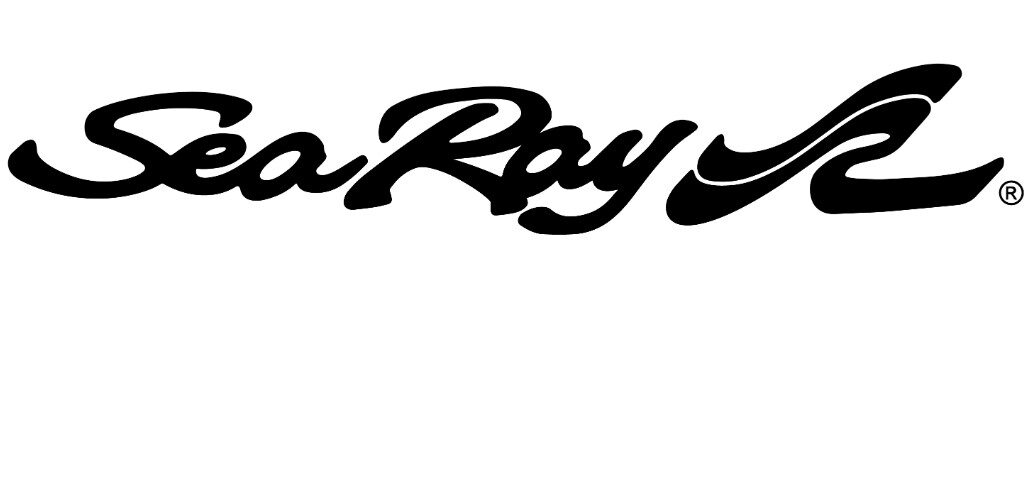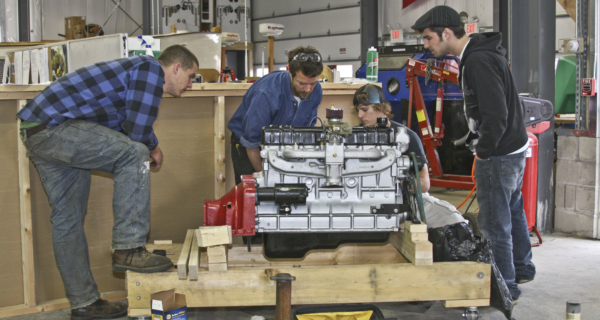Raw materials pinch sterndrive manufacturers
Mercruiser and Volvo Penta, the two primary players in the production of sterndrive engines, unquestionably agree that one key factor is negatively affecting that segment of the marine industry.
But, of course, they are not alone. In fact, all segments of the marine industry are fighting the same daily battle.
The spiraling costs of raw materials, not the least of which are petroleum and metals, are raising havoc with the bulk of the marine industry, not just sterndrives.
“That has been the wild card all year and it’s something we’ve been chasing all year,” said Mercruiser President Kevin Grodzki.
Clint Moore, president and CEO of Volvo Penta for the last 10 years, agreed: “The inflationary costs are the highest we’ve seen in years, across the board,” he said. “The petroleum-based costs certainly impact us because we do a lot of transporting product, in-bound and out-bound, but compared to the boat builder, it’s not nearly as big a factor as it has been for many of our boat builder customers.”
Grodzki said the rising costs of metals, such as aluminum, copper and nickel, among others, also has adversely affected the marine industry.
“Overall, it (inflation) has a dampening effect on the market place,” Grodzki said. “You’re beginning to see the impact on boat builders who are beginning to cut back their schedules a bit. We began to see that at the very end of the quarter, a softening in the retail environment.”
Yet, overall, Mercruiser and Volvo Penta, affiliates of major companies Brunswick and Volvo, respectively, appear to be weathering the storm, so to speak, where sterndrives are concerned.
“It has been a reasonable year for us in ’06,” Grodzki said. “Our sales and our business have met expectations for the first half of the year, but we’re beginning to see some signs, some signals, of retail weakness in the market place. And we are beginning to see that in the sterndrive sector as well. However, the first half was relatively healthy.”
Moore, meanwhile, wasn’t quite as enamored of business in the first half of 2006.
“It’s been a tougher year than we’ve had since 2000,” said Moore. “If I knew exactly why, I would be indestructibly rich. My hunch, like everybody else’s I think, is it’s no single thing, but a cumulative collection of things.
“Gas prices, business cycles, inflation, raw material costs, they all play a part and you make the best of however it cycles, or trends. I’ve been in this business for 30 years now and that’s the way it’s historically gone.
“I do have to say, though, that this is not a bad year. All things considered, speaking for Volvo Penta, I’ve been pleased with the performance. We’re not quite flat, but just a little bit down from last year, very little. If I had to characterize the business, the growth in sterndrives came sort of naturally. By that I mean, we’re not out pounding heads to get somebody to buy something from us, but the business just wanted to be at that level and kept growing.”
Yet, despite a somewhat down year, Moore is quick to add that, geographically, some areas are performing very well.
“The Midwest has had its own unique difficulties and has been quite soft,” Moore said. “But other parts of the country, the southeast, northeast and west have been stronger.”
Grodzki said some other factors could be involved, in addition to the inflationary spiral.
“The chronic issues are still there,” said Grodzki. “Access to water is one issue that will continue to affect our business. Also, the demographic profile in terms of the relatively small participation among minorities in boating is something we need to address. The opportunity we have to grow and appeal to a broader cross section of the market place is a key area.”
Technology is another key to a successful future, according to Grodzki.
“There are a lot of things going on in our research and development area,” Grodzki said. “Obviously, the big thing we’re focused on primarily is technology, bringing Zeus to the market, a pod technology originally introduced to the market place in Miami.
“We have had fantastic results with our trials of that technology and that program. Bringing that to the commercial market place within the next cycle of new products is really our primary focus. There’s a lot of technologies there alone that we believe have a place not only in the engine, but the fuel economy, performance and also the hardware and drive unit itself. There are key handling aspects we believe that have a place not only in the pod drive technology, but in some of the other sterndrive and dual engine technologies in outboards.
“We believe that all of those are very important developments we will continue to see through this period of time.”
That period right now, however, has been adversely affected by the inflationary spiral, which, of course, has forced both Mercruiser and Volvo Penta to make some adjustments.
“It has been very difficult to deal with,” said Moore. “But perhaps unlike many of the boat companies, we at Volvo Penta are fortunate to be a part of a very large company and we do a lot of futures that hedge against inflation like we’ve seen lately. Brutal, though, is not much of an exaggeration to put it mildly.”
Added Grodzki, “It’s no surprise that some of the costs of raw materials have led to the pricing action we’ve had to take in the market place, both going back to January and again in July. It’s not something we take a lot of pleasure in doing, but obviously we had to do something to mitigate the impact it was having on our margin.”
SIDEBAR
Replacement drives fighting costs, too
The popularity of the replacement sterndrive market continues to increase. With a number of regional and a few national players in the market consumers have greater access to replacement engines than ever before.
By eliminating a series of layers in the distribution chain, Sterndrive Engineering, Clearwater, Fla., jumped into the replacement market three years ago, offering new sterndrives at dramatically reduced cost. At a dealer price of $995, the company’s engines are less than half the cost of what an original equipment replacement drive would cost.
“We saw need in the market for an economical quality drive for the boat owner whose boat may be 10-20 years old that can’t afford putting a new OEM drive on his boat,” says Greg Pickren, president of Sterndrive Engineering. “The target market is the economically minded boater who doesn’t have a big budget for repairs, and we intentionally kept the margins thin, ours included.”
The suggested retail price is set to hold very tight margins.
Companies in the remanufactured marine engine business are subject to the same pressures as their OEM counterparts, however. At Indiana’s Jasper Engines and Transmissions, marine product manager Darren Ragsdale says fuel prices are causing a bit of concern as the boating season winds down, but that business this year has not yet fallen off compared to year’s past.
“Two-thousand-six has been flat compared to 2005, but we are not down,” he says. “We’re just like everybody else, we’re a little bit concerned over the fuel prices and some of the weather that we are dealing with. We’re afraid there may be a downturn later this year, but through July numbers have been good.”
Ragsdale says that business may be down a bit in the Midwest compared to the East Coast or the Southeast as business in Florida and Texas is strong with each area rebounding well from last year’s hurricane season.
Jasper is somewhat concerned that business may slow toward the end of the year if the economy tightens and people decide to delay maintenance.
“I’m concerned about this fall because some people will maybe put off repairs that are usually done,” Ragsdale says.
Materials prices are also a concern, but they’re a concern shared by the whole industry.
“Certainly aluminum pricing is a factor,” says Pickren. “All of the alloys and metals pricing have gone up dramatically in the last two years. A number that would be interesting to look at is what the aluminum alloy prices have done. It’s doubled in the last few years.”
“Everything is going up, but it’s going up for everybody else too,” Ragsdale says. “So we’re worrying about the things we can control and not worrying about the things we can’t.”




